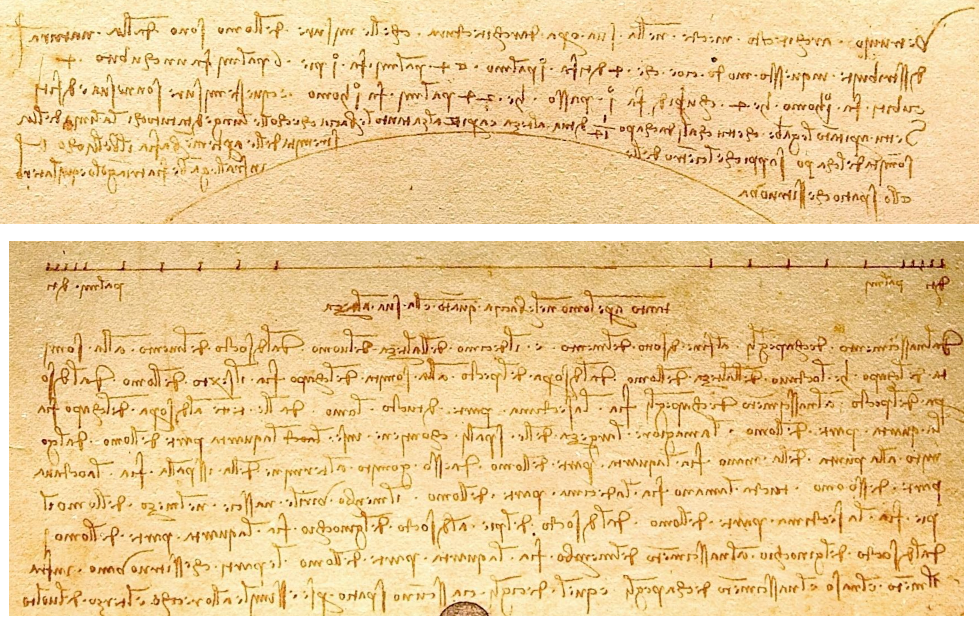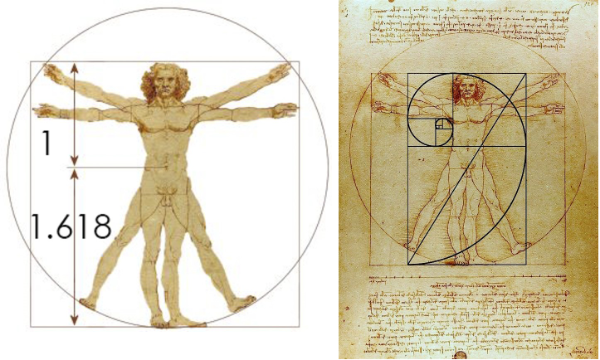
the Vitruvianse man - dimensions
Vitruvius
In the 1st century BC the Roman architect Vitruvius wrote a monumental work '[i][url=https://www.chenarch.com/images/arch-texts/0000-Vitruvius-50BC-Ten-Books-of-Architecture.pdf]De architectura[/url][/i]', consisting of ten books. In the 1st chapter of the 3rd book he describes dimensions an proportions so that artist could depict the ideal man.[br]Vitruvius described a man within a square ([i]homo at quadratum[/i]) and a man within a cicle with center the navel ([i]homo at circulum[/i]) and this representations ware taken over by quite som renaissance artists.[br]Leonardo da Vinci combined both in one drawing. His drawing of the 'Vitruvian man' became on of the most famous drawings in history of art.
comment
Above and below his drawing da Vinci wrote a text in mirror writing. In this text he refers to Vitruvius and the proportions he described.

tekst en vertaling
At the page [url=https://en.wikipedia.org/wiki/Vitruvian_Man]Vitruvian man[/url] you can find the Italian text as well as an English translation.[br]On one point da VInci uses another proportion. Vitruvius measured the foot as 1/6 of the lenght of the man, where da Vinci chooses 1/7.
where's the navel?
Key point in combining circle and square is the navel.[br]Th root of the penis is the middle point of the square, the navel is the center of the circle but...[br]while da Vinci describes in detail the eyebrows and the ear, he doesn't mention the navel. Online you'll find many pictures in whitch it's clear: for many the Vitruvian man is the example that illustrates the application of the golden ratio in art. [br][list][*]The picture on the left shows [math]\varphi[/math] as the ratio between the navel and the length of the man.[/*][*]The picture on the right shows a spiral, inscribed in golden rectangles.[/*][/list]The only reasion for this is the widespread assumption that as well in Roman and Greek Antiquity and in hte Renaissance 'the golden ratio' was the ruling esthetical standard (as until today). With all the dimensions and proportions it should be possible to check if indeed we can find [math]\varphi[/math]. In the next activities we'll control if the assumption [math]\varphi[/math] as radius of the circle is correct. As well graphically as arithmically we'll search the position of the navel, only based on de proportions in da Vinci's text.

where's the focus?
Our focus is on the position of the navel within the square.[br]The focus of Vitruvius and Leonardo da Vinci is on the numerous proportion. In Antiquity proportion is crucial: thing are related. For Vitruvius it's quite normal that de different parts of the human body are related to the length of the man with ratio's of integers . So in the human body, so in the design of a temple. Here's the real focus.